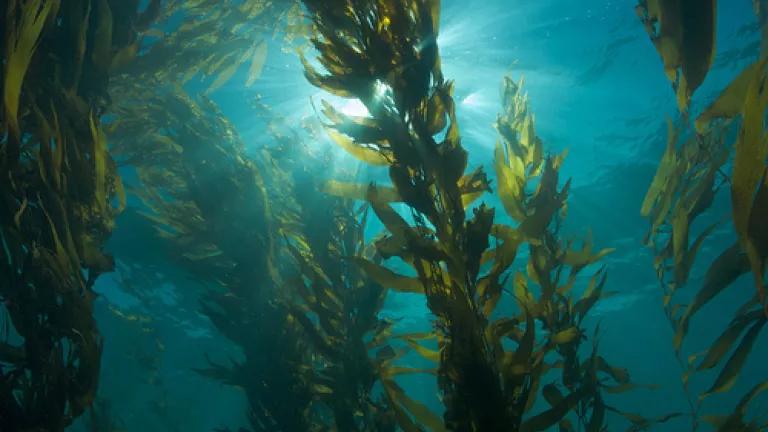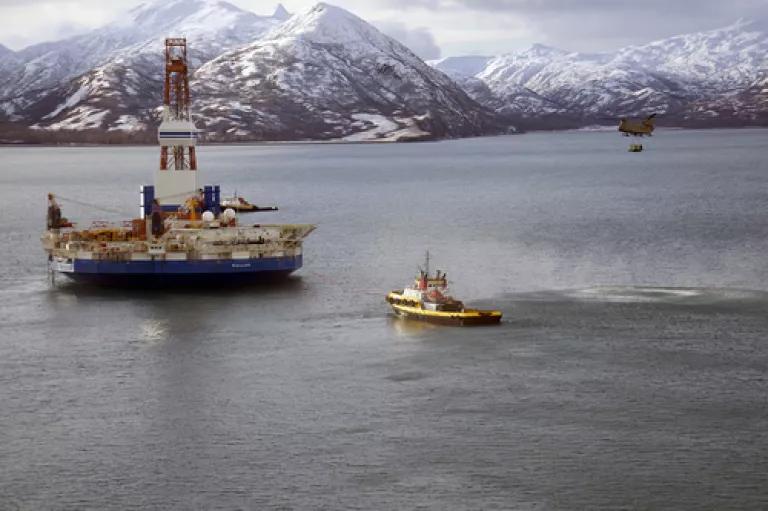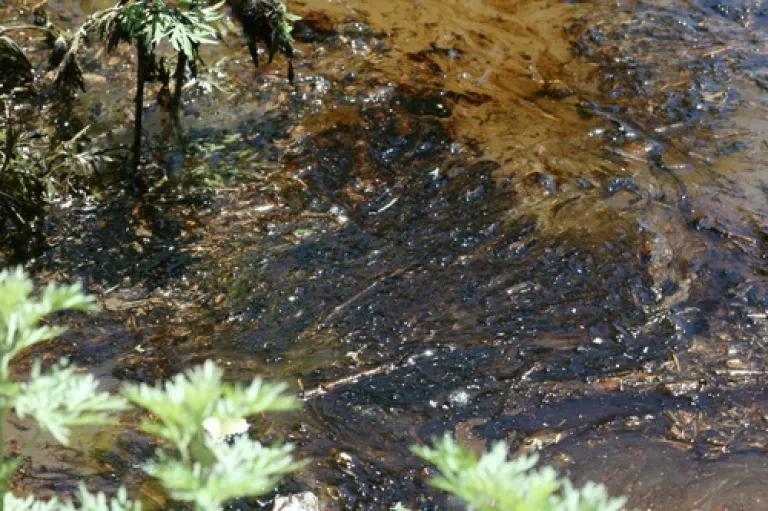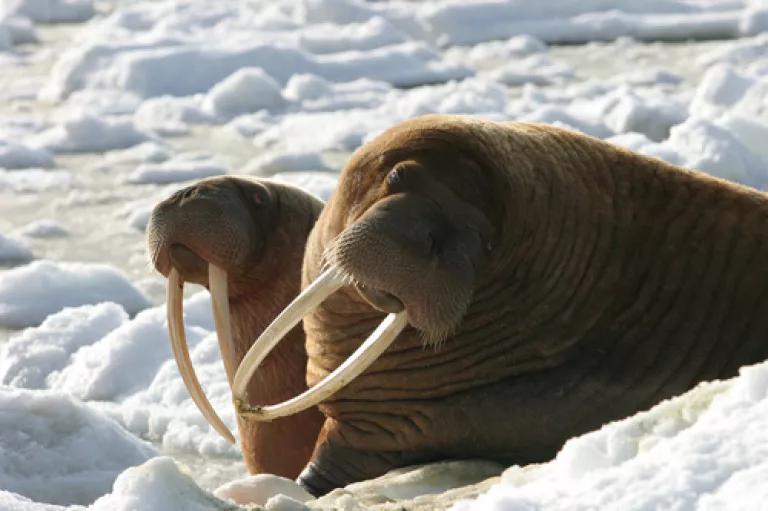
An oil pipeline near Refugio State Beach in Santa Barbara County ruptured Tuesday morning, spewing about 105,000 gallons of oil onto the coast and into the Pacific Ocean. The spill was discovered by locals. By the time the Coast Guard arrived, the leak had already covered 4 miles of the coast, and after the broken pipe was reported, it took the Texas-based company that owns the pipeline, Plains All American Pipeline, several hours to shut off the leak.
(Photo Credit: NRDC)
That's a disaster in Santa Barbara. In the Arctic, an oil spill like this could be apocalyptic. Yet, just this month, President Obama gave Shell Oil approval to drill in the Arctic starting in July.

(Photo credit: US Coast Guard)
Up there, you don't have latte-sipping beach walkers to report spills. In the Arctic, spill cleanup is impossible. There is no proven method for containing and cleaning up an oil spill in those waters. Our nautical charts for the Arctic seafloor are incomplete. And then there are all the difficulties of staging a response. The weather is inclement and mercurial year-round, there is limited housing for support crews - and forget reliable cell service, wifi, or a major airport. It would take days, more likely weeks, to bring together the equipment and personnel needed to even begin to assess the damage. The cleanup effort after the 1989 Exxon Valdez oil spill took more than three years, and even then, there were pools of oil left in some areas.
Spills happen. In 2010, BP's Macondo well in the Gulf of Mexico shot oil into the water for 87 days. But what makes the problem worse is that oil companies are bad watchdogs of their own equipment. The federal agency responsible for regulating interstate pipelines (the Pipeline and Hazardous Materials Safety Administration) is perennially underfunded and understaffed. So, the agency relies on pipeline operators to self-report problems. The hard lesson here is that self-monitoring is unreliable. That's a lesson we've learned before.

Oil in Montana's Yellowstone River. (Photo credit: NRDC)
- The 2010 Enbridge Energy spill in Michigan gushed 1 million gallons of bitumen -- the dirtiest, stickiest oil on the market -- into the Kalamazoo River. The defect in the pipeline that caused the spill was detected but ignored for years. When that defect finally burst, the alarm bells signaling the rupture were ignored by operators. Again, it was local residents calling 911 that brought the leak to attention. In the end, it took nearly 18 hours before the oil company detected and confirmed its leak. It took another three hours to call the emergency response center for help.
- A June 2011 oil spill dumped 63,000 gallons of crude into Montana's Yellowstone River - 42,000 of which could have been avoided if Exxon personnel had responded right away. Instead, operators only partially shut down the line when problems first emerged.

(Photo credit: US Fish & Wildlife Service)
An oil spill in the Arctic could easily tip that ecosystem down a fearsome cascade of agony. Some of our most enchanting creatures live up there--bowhead whales, polar bears, narwhales, walruses, and ringed seals, among others--and they are already under horrible strain from global warming.
I've surfed at Refugio Beach, and its waters are as rich with fish, birds, and dolphins as any I've paddled out in from Los Angeles to San Francisco. Refugio is Spanish for "refuge": a place that provides shelter or protection from danger. From California to the Arctic, our coves and beaches should be just that. Keep out big oil.

